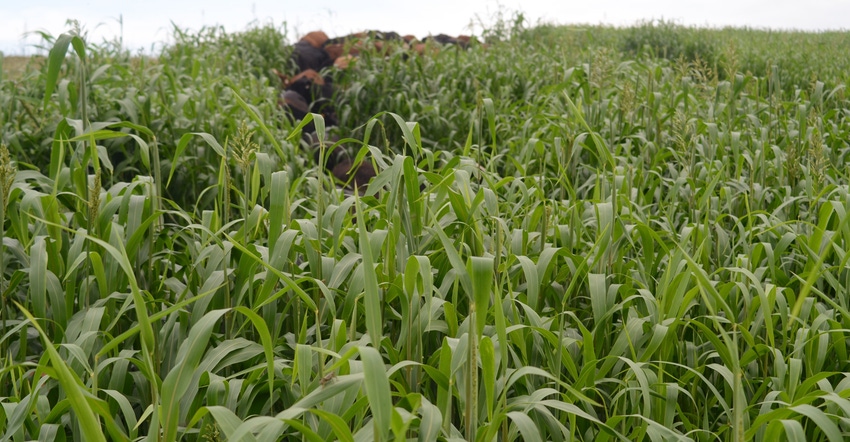May 21, 2019

According to USDA numbers, hay stocks for the U.S. were the second lowest they have been for the past 25 years in December 2018 — the only year with lower hay stocks was December 2012.
There will be little carryover hay this year in Nebraska because of severe winter weather conditions. This sets up a scenario where annual forages may play an important role in providing forage for cattle producers this year.
In the Nebraska Panhandle, there are situations where the winter wheat crop is in poor condition because of winterkill. Where this is the case, producers may want to consider either salvaging the wheat crop with grazing or for hay, or terminating the wheat and planting a summer annual for forage production.
Visit with your crop insurance agent when evaluating the options of what to do with a wheat crop that is in poor condition.
For much of the state, there is a full soil moisture profile. In addition, the NOAA Climate Prediction Center is forecasting that much of Nebraska will have above-average precipitation May through July. These conditions lend themselves to the establishment and production of summer annual forages.
Summer annual forages have varying attributes that fit different management practices. Forage yield and quality will depend on soil fertility, moisture, growing conditions and stage of maturity at harvest.
Summer annual forages are the most water-use efficient and drought tolerant of annual forages. Forage sorghum, sudangrass, forage sorghum-sudangrass hybrids, foxtail millet, pearl millet, proso millet and teff all are options for Nebraska producers, depending on their forage needs and how the crop will be harvested. The summer annual forage that is the best fit will depend on the production system and goals of the producer.
Growing summer annual forages
Summer annual forages should be planted once soil temperatures reach 55 to 60 degrees F to ensure rapid germination. In western Nebraska, soils typically reach these temperatures in mid-May to early June.
Summer annual forages can be planted through mid-July and still have acceptable yields. When grown under dryland conditions, annual forages tend to yield 1 to 3 tons per acre when moisture and soil fertility are adequate.
Summer annuals can be harvested by direct grazing, windrow grazing, chopping for silage or harvesting for hay. These forages can grow and mature rapidly, making it challenging to graze or harvest the crop at optimum times.
Beef.unl.edu has several articles, webinars and NebGuides on planting, grazing or harvesting annual forages.
Toxicity concerns
Two types of toxicity are possible with these forages: nitrate poisoning and prussic acid poisoning. Nitrate poisoning is most likely to occur when forage is harvested or grazed after the plant has undergone stressful growing conditions and nitrate conversion to amino acids (protein) is reduced.
In western Nebraska, this is most likely caused by drought, hail or frost. Nitrate poisoning can occur in forage that is directly grazed but is more likely to occur when forage is harvested as hay and then fed. Testing forages before cutting and after they have been harvested can help identify potential nitrate risk.
Prussic acid does not occur freely in normal, healthy plants, but can occur when plant tissues are damaged because of chopping, chewing by animals or frost. Sorghum-sudan and sudan grass hybrids carry this risk. If planning to graze a sorghum-sudan or sudan grass hybrid, plant varieties with low prussic acid potential. Millets or teff are not a risk for prussic acid poisoning.
For information on growing and using summer annual forages, see these Nebraska Extension NebGuides: Summer Annual Forages for Beef Cattle in Western Nebraska or Summer Annual Forage Grasses.
Berger is an Extension beef educator.
Source: UNL CropWatch, which is solely responsible for the information provided and is wholly owned by the source. Informa Business Media and all its subsidiaries are not responsible for any of the content contained in this information asset.
About the Author(s)
You May Also Like




